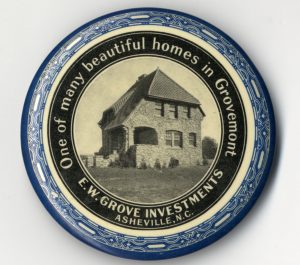“In spring 1942 — shortly after the United States entered World War II — the State Department leased the Grove Park Inn as an internment camp for Axis diplomats, family members and servants.
“ ‘All of this is strictly in accordance with international law,’ the [Asheville Citizen reported]. ‘While the Italians, Bulgarians and Rumanians are here they will be isolated from the community and protected from the curious.’
“Subsequent information arrived only after the 221 prisoners (the first official number provided to residents) departed [on May 6] for their homelands in exchange for U.S. diplomats held abroad.
“According to the Citizen, the foreign diplomats had paid for their stay at the Grove Park Inn. ‘Shuffleboard, lawn bowling, badminton, and bridge were reported to have been the chief amusement’ during their confinement.”
— From “Foreign diplomats held hostage at the Grove Park Inn, 1942″ by Thomas Calder in Mountain Xpress (Sept. 6)

